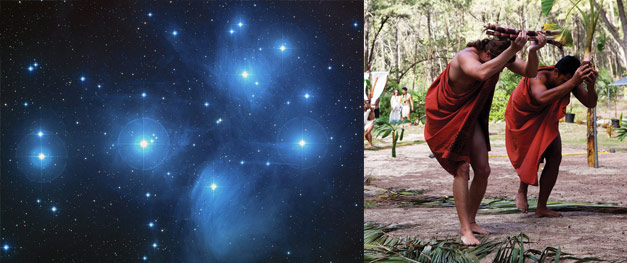
For the close of the 2009 Makahiki season, Kapu helped organize a torch walk that encircled the island of Maui, covering 193 miles over seven days. Kapu says the walk was about enlightening and unifying the people of Maui. What they saw in the torch was hope. The time of Lono being among us, he says, tells us to prepare for the future by taking care of the aina. Kapu says participating in traditional practices can also be a stimulus for economic generation, noting that more island hotels are incorporating traditions and ceremonies into their everyday operations, deepening the experience for workers and visitors alike.
When the Makalii climbed from the eastern horizon at sunrise and was no longer visible in the night sky, Hawai‘i’s elaborate harvest festival drew to a close. Towards the end of the traditional Makahiki festivities, four men lifted a large net filled with many different kinds of food and shook it. Food slipping through the mesh promised a time of plenty — the opposite warned of famine. An unpainted canoe was put to sea, lifting the kapu on farming and fishing. Filled with a basket full of food, the canoe was set adrift: Lono departing the island.





